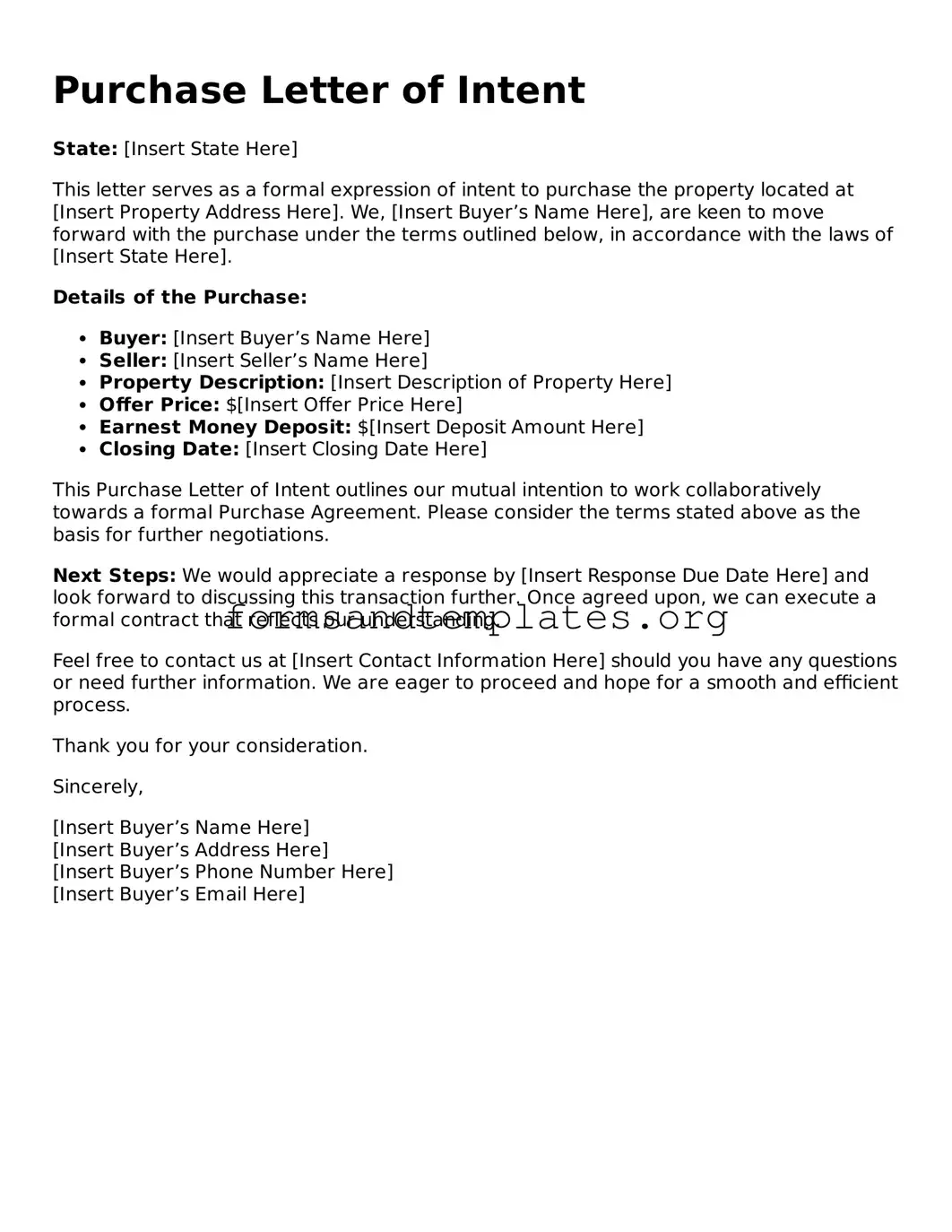Purchase Letter of Intent
State: [Insert State Here]
This letter serves as a formal expression of intent to purchase the property located at [Insert Property Address Here]. We, [Insert Buyer’s Name Here], are keen to move forward with the purchase under the terms outlined below, in accordance with the laws of [Insert State Here].
Details of the Purchase:
- Buyer: [Insert Buyer’s Name Here]
- Seller: [Insert Seller’s Name Here]
- Property Description: [Insert Description of Property Here]
- Offer Price: $[Insert Offer Price Here]
- Earnest Money Deposit: $[Insert Deposit Amount Here]
- Closing Date: [Insert Closing Date Here]
This Purchase Letter of Intent outlines our mutual intention to work collaboratively towards a formal Purchase Agreement. Please consider the terms stated above as the basis for further negotiations.
Next Steps: We would appreciate a response by [Insert Response Due Date Here] and look forward to discussing this transaction further. Once agreed upon, we can execute a formal contract that reflects our understanding.
Feel free to contact us at [Insert Contact Information Here] should you have any questions or need further information. We are eager to proceed and hope for a smooth and efficient process.
Thank you for your consideration.
Sincerely,
[Insert Buyer’s Name Here]
[Insert Buyer’s Address Here]
[Insert Buyer’s Phone Number Here]
[Insert Buyer’s Email Here]
